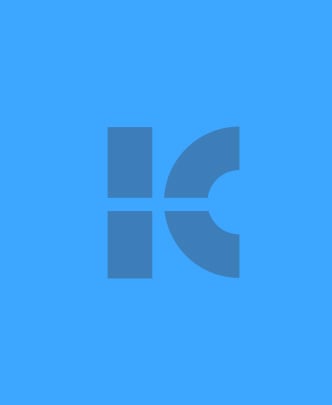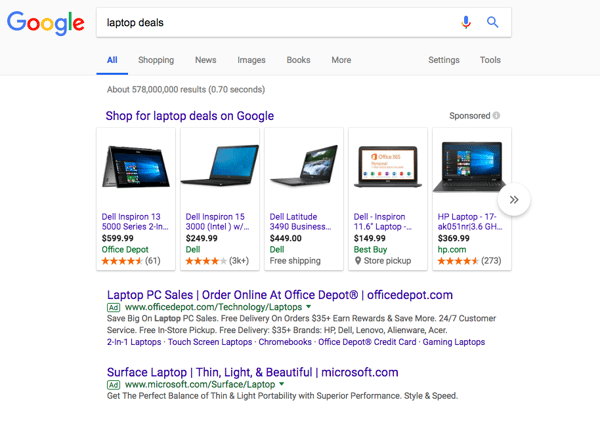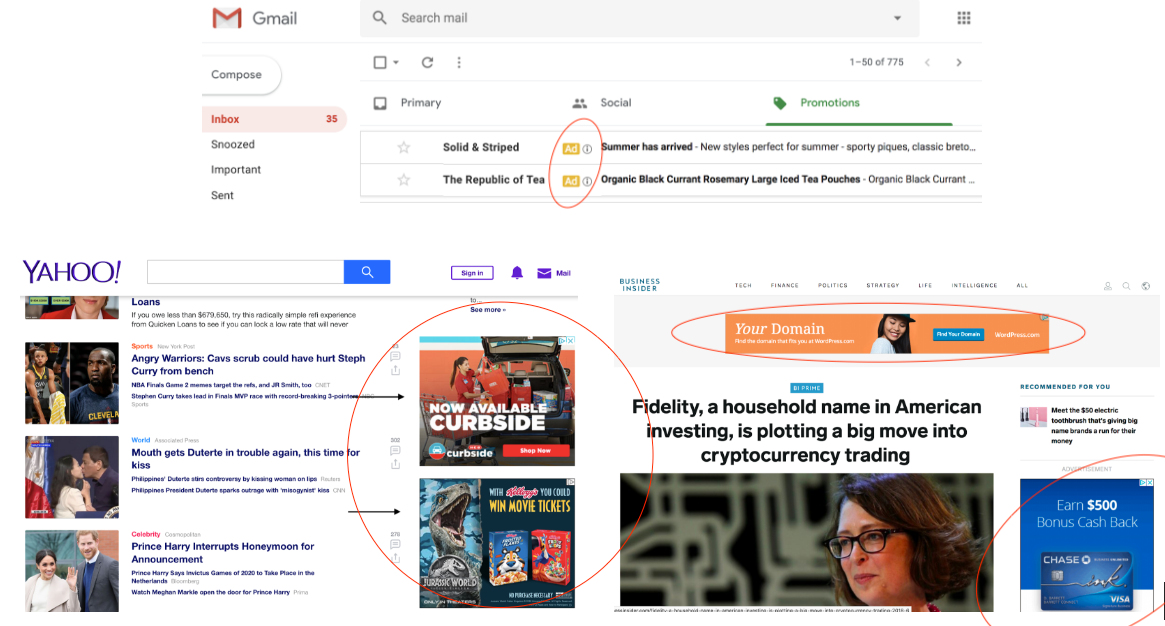
Google PPC Advertising: Pros and Cons

Google PPC refers to the pay-per-click advertising strategy implemented through the Google Adwords platform. Google PPC allows you to get in front of customers when they’re searching for businesses like yours on Google Search and Maps. By leveraging pay-per-click on Google, you only pay for results. Your advertising budget is dedicated to the clicks you receive to your website or calls generated through ads to your business.
Successful online marketing often requires using channels that fall into three categories: owned, earned, and paid. Owned and earned channels include everything you publish on your own website and all your SEO efforts. Those are important parts of a solid inbound marketing strategy, but they require playing a long game. It can take Google over three months to crawl a webpage, meaning everything you do on your own website to gain visibility in the search engines will take time to make its mark.
Paid media includes any advertising you directly pay for, and it can be a useful way to give your owned and earned channels a needed boost. One of the main paid channels available to online marketers is Google PPC Advertising.
What is Google AdWords Advertising?
Google AdWords advertising, often referred to as Google PPC (pay-per-click) advertising, is behind a good portion of the ads you see when you’re browsing online.
The most obvious place you encounter AdWords ads is on the search engine results page of Google, where they frequently show up above the natural results, at the top of the local results map and sometimes to the side of the main results, as well.

Google AdWords also powers the ads that show up on more than 2 million websites and apps included in Google’s display network. The display network includes all the well-known Google properties you would expect, like Gmail and YouTube, as well as a huge number of media properties not owned by Google that make money by displaying ads.

How Google AdWords Advertising Works
Google AdWords uses a bidding model. You can provide some details on where and how you want your ads to show up and what you’re willing to spend, and the AdWords platform will award relevant placements to the top bidder. For some businesses, it can be a useful tool to raise brand awareness and help your marketing go further. But it’s important to know the good and the bad before deciding to invest in Google PPC.
6 Pros of Using Google PPC Advertising
You can reach a large audience.
One of the key tenets of marketing is to go where your audience is. Well, Google is where pretty much everyone is. The search engine sees billions of searches every day from users all around the world, and that’s just the search engine itself. The many Google products have billions of users, as well, and sites in Google’s Display Network reach more than 90 percent of Internet users worldwide.
For your website and content to do their job, people have to see them first. If that’s a step you struggle with, PPC advertising allows you to tap into huge numbers of users that Google and its partner sites have cultivated.
Keyword marketing means your ads are always relevant.
While being able to reach a lot of people is valuable, for marketers, reaching the right people is what’s most important. Part of what makes Google PPC advertising a good choice for businesses is that it provides a relevant audience as well as a big one. Using the Google AdWords keyword tool, you can specify the keywords you want your ads to show up for when someone searches.
While SEO is one path to getting your content into the results for those searches, it’s a slow and strategic process—especially for competitive keywords. PPC works as a shortcut to get your webpages in the results for relevant keywords more quickly and easily, and it allows an opportunity to show up for keywords that would be out of your reach in the natural results.
Demographic targeting helps you reach the right audience.
Keywords aren’t the only type of relevance possible with Google Adwords advertising; you can also use the platform’s demographic targeting options to ensure your ads show up for people in your target audience. You can limit the audience for your ads by:
- Age
- Gender
- Device type
- Geographic location
In addition, Google offers in-market targeting, which means you can deliver your ads to consumers the data shows have searched for products similar to yours in the past.
Advertising to people in the specific groups most likely to buy from you is more efficient and likely to lead to higher conversion rates.
You only pay for clicks.
Even with all of the targeting options Google PPC advertising makes available, the huge audience could mean your ads show up for a lot of people who aren’t interested in your products or content. But you don’t have to worry about that costing you—Google AdWords only charges advertisers when a person clicks on the ad.
Every time you pay, it’s because someone actually went as far as visiting your website. You’re paying for actual people who have already done some self-qualifying by choosing to click.
Remarketing allows you to maintain a connection with past visitors.
A lot of businesses—especially in the B2B space—will need to interact with consumers more than once to convert them to a customer. Someone visiting your website once is nice, but getting them to come back again is often the difference between a lead and a promising potential customer.
Google AdWords makes it possible to serve up ads around the web to people who have already visited your website, ensuring that you remain top of mind for someone who’s already shown an interest in your product and is more likely to interact with your brand again.
Analytics give you insights to constantly improve.
Any marketing tactic you try will only be as good as your execution, which is directly related to the data you can use to learn and improve. Google AdWords provides data on how each of your ads and campaigns performs so you can gain insights over time on what works well and what doesn’t. The information provided includes:
- The number of clicks for each ad and data on who clicked
- The number of leads each ad and campaign generate
- The amount of traffic AdWords drives to your website
- The keywords you target that get the most clicks and leads
- The cost per lead
With that information, you can tweak your PPC campaigns for better performance over time and make sure the ROI is worth it.
5 Cons of Using Google AdWords Advertising
People trust natural results over ads.
Google PPC can be a great way to get your brand in front of people for keywords that you’d have a hard time ranking for with SEO. But ultimately, showing up on the SERP in an ad isn’t as effective as showing up in the organic results. People trust the natural results more and usually click on them at higher rates than the PPC ads (although that could be starting to change as Google makes ads look more like natural results).
PPC ads can help increase your brand visibility and bring you new traffic, but not to the same degree that SEO can—if you manage to land top spots for relevant search terms, that is.
High-value keywords are competitive.
The rates for Google AdWords advertising vary based on the keywords and targeting options you choose. Because Google uses a bidding structure, you’re competing against every other brand interested in that keyword. The more businesses are willing to spend good money to show up for that term, the more you’ll have to pay for your ads to show up, as well.
Any keywords that are general (e.g. “accounting software”) or indicate that the person is likely ready to buy what they’re looking for (what’s known as a transactional keyword, e.g. “accounting software free trial”) will likely cost you a lot of money to consistently show up for.
There’s a learning curve.
Getting familiar with the Google AdWords platform takes some time. If you’re new to PPC advertising, you’ll want to do some research or training to learn the ins and outs of using the platform, creating the kinds of ads that perform well, and understanding the analytics AdWords provides.
And for Google PPC ads, you’re limited in how much space you have and what your ads can look like. Search and email ads have a set number of characters you’re able to use. Making a convincing sell for your web page in just a few words is a challenge, especially if you’re used to having more.
You should either be ready to commit some real time to learning how to do PPC advertising well, or devote some of your marketing budget to hiring someone that already gets it.
It can get expensive.
While Google PPC advertising costs less than a lot of other types of advertising, it can still add up—especially if you’re not careful.
You can always set your maximum budget in Google AdWords to make sure you don’t pay more than you can afford. But if you aim for competitive keywords and don’t spend much, you won’t get much traction. And if you don’t stay on top of your analytics to make sure the clicks you’re paying for are from people in your target audience likely to convert, then you’ll be wasting a lot of the money you spend.
PPC advertising can therefore get pretty expensive, especially in the early days when you’re learning the ropes of what works for you.
It’s not a replacement for inbound marketing.
Google PPC advertising through AdWords can be a good way to supplement your other marketing efforts, but you shouldn’t see it as an either/or issue. Paid advertising can be a good way to help people learn about your brand to begin with and visit your website for the first time, but it won’t necessarily do the work of educating your prospects or building the sort of relationship that leads to conversions.
If you introduce Google AdWords advertising into your marketing plan, you should look for ways your ads can support your other marketing efforts. PPC ads can introduce your products to a larger audience, as well as bringing new eyes to some of your best content. It can bring more leads into the pipeline your inbound marketing then helps move through it. By making it one part of a larger strategy, you can make all the other parts of your inbound strategy go a little further.




